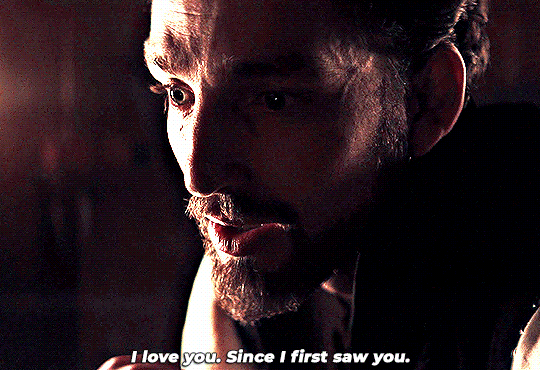#small pox
Text

#who#world health organization#mpox#monkeypox#monkey pox#smallpox#small pox#pox#pandemic#spn#supernatural#supernatural I love you#health
156 notes
·
View notes
Text
https://rumble.com/v3xbwy7-dr-suzanne-humphries-dissolving-illusion.html

Powerful presentation on the abusive history of vaccine mandates and the sloppy "science" used to justify it.
4 notes
·
View notes
Link
Lucy Ward speaks to Elinor Evans about the story of English Quaker doctor Thomas Dimsdale, who took up the risky challenge of inoculating Empress Catherine II against smallpox, as a powerful statement at a time when the disease was ravaging Russia and superstition held sway.
#Catherine the Great#History Extra podcast#inoculation#Thomas Dimsdale#Quaker#russia#small pox#disease#history podcasts#history podcast#history#medical history#medicine
6 notes
·
View notes
Text

Haida sailor mask, c. 1850s.
Region: North-East Coast.
This Haida mask, depicting a red-haired European sailor, demonstrates a remarkable fusion of ancient Native American traditional culture with the outsiders who came to trade and settle in North America. The Haida had a rich artistic culture, and this is exquisite example of their work. Probably carved in cedar wood, the hair and beard are realistically rendered and painted, and the freckles are inlaid with glass. The maker may have heard of a story that a Native American girl once saved the life of a red-haired sailor, but the realism of this carving suggests that it was probably based on the artist’s own observation s of European sailors and traders. Unfortunately, this contact with Europeans had less benign influences: the native population was devastated by smallpox, influenza and other diseases previously unknown to them. After 1774, when they experienced the first contact with Europeans, 95% of the Haida population was wiped out by epidemics, and by 1915 the population comprised just 558 individuals.
Source: ‘Folk Art’, Susann Linn-Williams, pp. 204-5.
#Native American#Haida tribe#traditional crafts#mask#European#sailor#small pox#influenza#epidemic#North-East Coast#folk art#art
6 notes
·
View notes
Text
Israeli Prime Minster Benjamin Netanyahu spoke before a joint session of Congress this week. Among other things protestors did in DC, they spray painted graffiti on a monument to Christopher Columbus, including the words, “Hamas is coming” in large red letters. In colossally poor taste, Christopher Columbus replied, “bring it, I’ll bring the small pox.”
#news#satire#parody#comedy#sketch#sketch comedy#benjamin netanyahu#hamas#christopher columbus#small pox#colonization
0 notes
Text
I was the weirdest dream the other day.
There were these bunnies that were like half the size of horses, and I touched one and got small pox from a oil or something on the bunnies.
I think my stress has been making me have very weird dreams lol.
#dream#dream i had#bunnies#rabbit#small pox#disease#sickness#wtf#what is wrong with my head#stress#idk man#horse
1 note
·
View note
Text
youtube
1 note
·
View note
Text
Bronze Age End’s Likely Cause
“Indo-European tribes such as the Phrygians, Thralians, Proto-Armenians, Macedonians and Dorian Greeks seem to have arrived at this time—possibly from the north.” + Vedic Aryans, etc. ofc.
Some suggest diseases, but diseases don’t just randomly appear. Noteworthy is the fact that the first instance of biological warfare was the Hittites’ plague.
Further, Indo European groups (Mycenaeans, Hittites, Sanskrit Mitanni, Vedic Aryans, etc) were known for weapons and war, more than anything else.
Indus Valley example: “Robbins Schug's research shows that leprosy appeared at Harappa during the urban phase of the Indus Civilization, and its prevalence significantly increased through time. New diseases, such as tuberculosis, also appear in the Late Harappan or post-urban phase burials. Violent injury such as cranial trauma also increases through time, a finding that is remarkable, she said, given that evidence for violence is very rare in prehistoric South Asian sites generally.”

160 individuals (67% of the total number excavated) from three main burial areas at Harappa: an urban period cemetery (R-37), a post-urban cemetery (H), and an ossuary (Area G)

Figure 4. Lesions on the cranial vault of a male skull, I.S.11.
This individual also has an injury (sharp blunt force trauma) on the frontal bone. The cranium is isolated and thus the etiology of these lesions is unclear (a: left lateral view). A close-up image demonstrates the destructive and proliferative character of these lesions (b: right frontal bone).
source: https://journals.plos.org/plosone/article?id=10.1371/journal.pone.0084814#s2
#indo europeans#indo european#prehistory#bronze age#ancient civlizations#mesopotamia#archaeology#disease#famine#indus valley#meluhha#melakam#vedic#brahmins#greeks#greek#hinduism#hittite#plague#small pox#history#mitanni#sanskrit#mycenean#aryan#iran#india#south asia#levant#syria
0 notes
Text
youtube
Credit: Lynae Vanee
Whew, she spilled all of the tea. And I am here for every drop. ☕️☕️☕️
#lynae vanee#_Lyneezy#parking lot pimpin#Florida#systemic oppression#systemic racism#book banning#Civil war#lyndon b johnson#abraham lincoln#Civil rights#Jacksonian democracy#trail of tears#democratic party#republican party#small pox#rutherford b. hayes#barry goldwater#paul sherrell#homophobia#Jim Crow#The new Jim crow#American History#Native American History#Black History#Youtube
1 note
·
View note
Text









What are you doing?
#mary & george#mary and george#maryandgeorgeedit#george villiers#robert carr#perioddramaedit#nicholas galitzine#laurie davidson#userninz#chrissiewatts#usergayppl#usersteen#mine*#and he did!#small pox and all!#anyway whatever. im still here. i never left#idc if any of this was emotional manipulation#they fcked nasty by the fire and everyone had a great time#THE ANGST... GIVE ME IT#the tears in his eyes oh it was so over for me the first time i saw this scene#something so doe eyed about how george looks here#also his lips. woah. okay#finally clearing out my m&g sets
322 notes
·
View notes
Text

My Generation 1 Farmer, as of Spring! I've only recently started, but I've been enjoying the game a lot.
My farmer is Alma Flowers (she/her), a former librarian who is unfortunately still haunted by the death of her dear friend Timothy Tweed - whom she had romantic feelings for. But as she adjusts to life in Honeywood, she strives to nurture an orchard and finds herself often in the company of Kat Hopkins, Isabella Whitfield, Agnes Bayley, James and Madeline Hutton, and William Wyatt. The friendships she's made a great deal comfort after tragedy.
Romance is far off her mind at the moment, but she does seem to have grown close to the Wyatt brothers, the local Blacksmith, and the teacher of the town himself...
I kinda wanna draw my favorite NPCs or the families of Gen 1 Honeywood! Hopefully I'll get around to it some time.
#OC: Alma Flowers#oc#original characters#character design#echoes of the plum grove#nobody has died yet!#but I saw a sick guy with small pox after the fishing festival so that might change soon rip#echoes of the plum grove oc
48 notes
·
View notes
Text
i need echos of the plum grove to have like a fandom where people like draw the player characters and their spouses bc its everything ive ever wanted in a game
#i maek post#ITS LIKE STARDEW VALLEY MEETS THE SIMS MEDIEVAL?????#LIKE HALF THE TOWN CAN DIE OF SMALL POX BC ONE FUCKER WITH POCKS HAD TO SHOW UP AT THE FISHING TOURNEY
9 notes
·
View notes
Text
yeah you might be anxious but are you shingles-at-26-years-old anxious?
#i'm sure having had covid influences the odds of shingles cropping up#but anyway this is such a delicious and dangerous vindication of my hypochondriac tendencies#had what we assumed is a bugbite#it expanded into a cluster of small blisters and i'm like well it ain't a bugbite because i haven't heard of anything that does that#and i was like 'well i'll ignore it for a while'#and wednesday i cannot remember what triggered the thought#probably one of the geriatric ads i get on sudoku sometimes#and i was like damn is it shingles#and looked up shingles symptoms#and was like damn sounds like baby shingles#but no i am of such a tender age and it doesn't hurt that bad#i was gonna keep ignoring it#but my mom was like 'no actually it's a little fucked up looking'#she didn't say it like that#so i went in#the nurse looks at it and is like 'have you ever had chicken pox'#and i'm like 'THAT'S WHAT I'M SAYING'#the np comes in and is like 'have you ever had chicken pox' and i'm like YES BULLSEYE#so i gotta go pick up an antiviral
3 notes
·
View notes
Text
youtube
This is the documentary which has piqued my interest in the 'Wild West'. The excellent ‘American Nomads’ from 2011 by Richard Grant. It took eight years to make and is based on his book ‘Ghost Riders: Travels With American Nomads’ (2003) which I am currently thoroughly enjoying (when I can muster up sufficient levels of concentration).
Being a geek, I transcribed some passages of particular interest. E.g.:
People have this idea that the West was won by heroic cowboys and that kind of thing - you get this idea from movies and mythology, but the key factors in the taming of the West were (1): disease, microbes, small pox [see my post about ‘William Penn’s Treaty With The Indians’ for the story of how Native Americans were given deliberately infected rolls of cloth by white traders] - that’s what really wiped out the nomadic tribes on the plains, these diseases which they had no resistance to. And (2) another really important factor was the invention of barbed wire fences. Fences restricted the free movement of animals and people, and enforced the new idea of private property. The nomadic Indian tribes hated fences. So did the nomadic trail cowboys who had grazed their herds up and down the plains. Now the damn things are everywhere.
So, the era of horseback nomads came to an end. The tribes were corralled on reservations. Railroads came, bringing their “iron horse” and in time the railroads produced a new and distinctly American form of nomadism. Transient labourers started riding the freight trains as a way to get to one harvest to the next. They were called ‘hobos’ and their hungry heyday was the Great Depression of the 1930s. After the Great Depression, America forgot about the hobos and tramps on its freight trains, but they never went away. At best guess, 20,000 people are still riding around on America’s freight trains.
Grant used to travel this way himself, but gave it up as it’s uncomfortable and dangerous. People have been known to lose limbs when trying to jump on to a moving train, only to fall and become trapped under its wheels.
#American Nomads#Richard Grant#documentary#bison#American buffalo#barbed wire#small pox#Native American#the Great Depression#freight trains#nomad#hobo#cowboy#American West#Wild West#Youtube
4 notes
·
View notes
Text
You know House M.D. is The Unhinged Show because if you asked "what's the most fucked up medical case on the show?" you'd get all different answers and they'd all be right
#house md#house#shut up I am right#what was crazier the guy who was eternal sunshine of the spotless mind-ed in vain or#house peer pressuring a guy to drink his crush's pee#oh no it must have been the girl who almost died because she had a tick in her vagina right#do you remember when they literally brought back small pox from the depths of the sea#reblog with your answer
31 notes
·
View notes